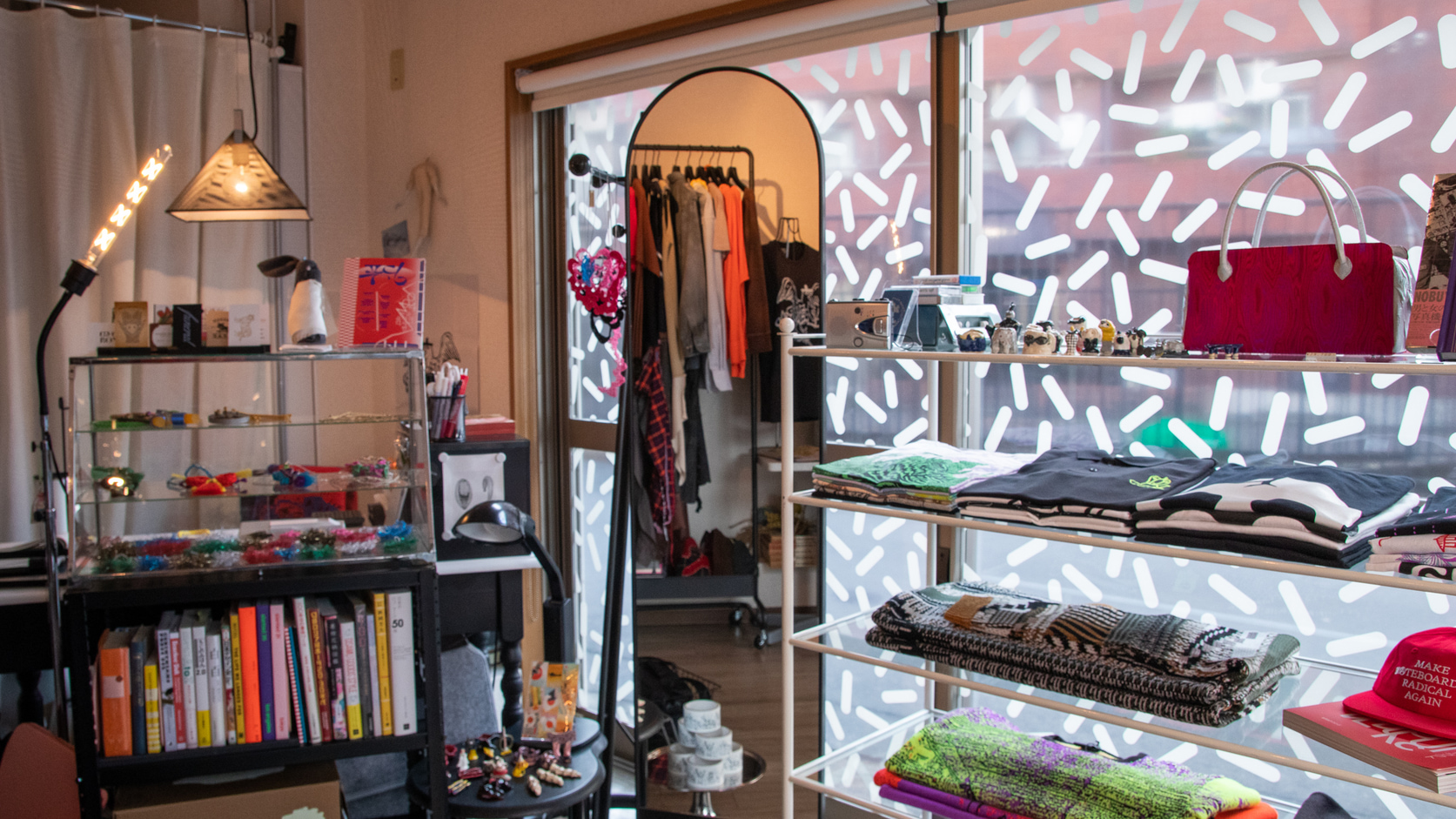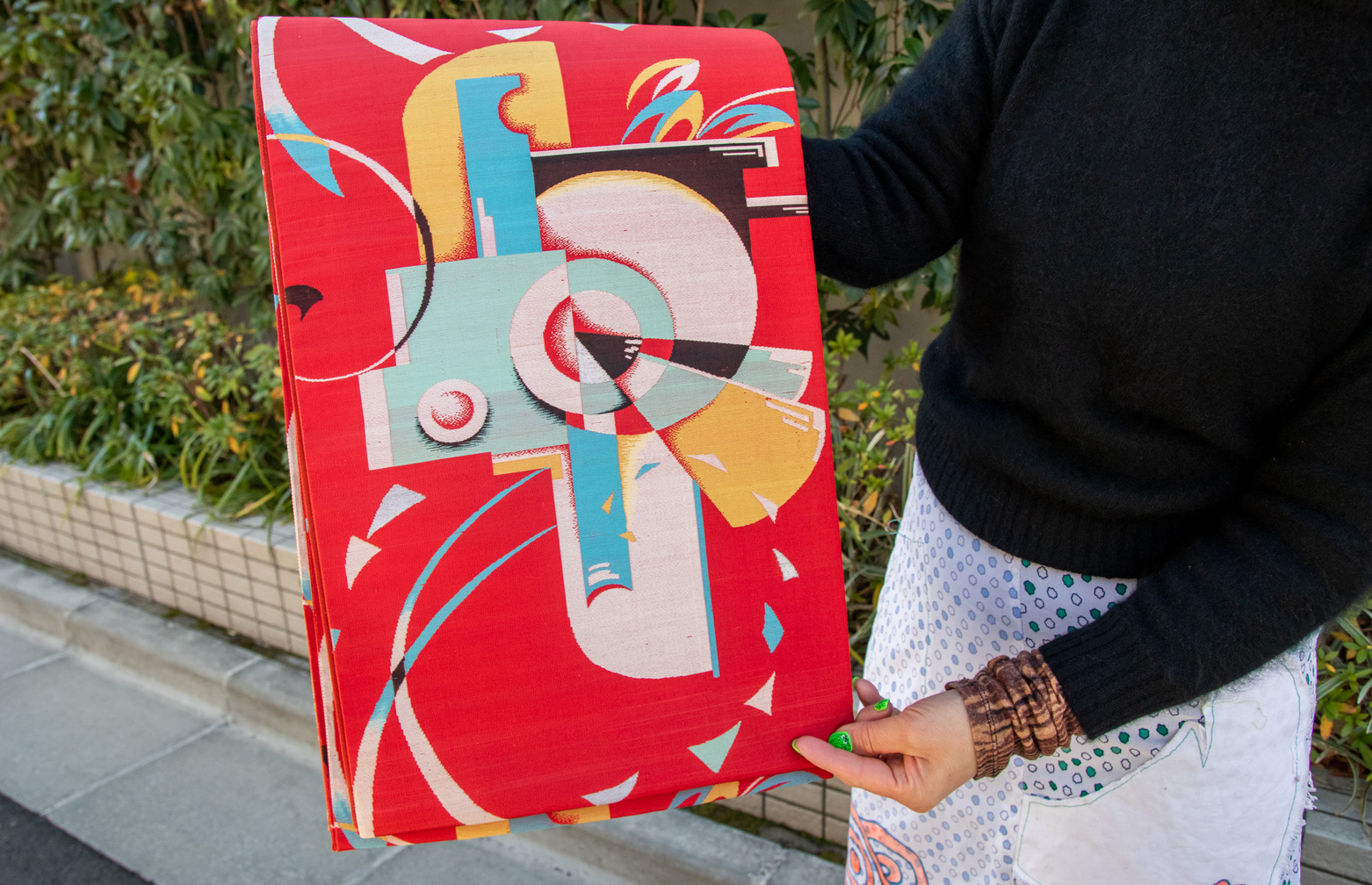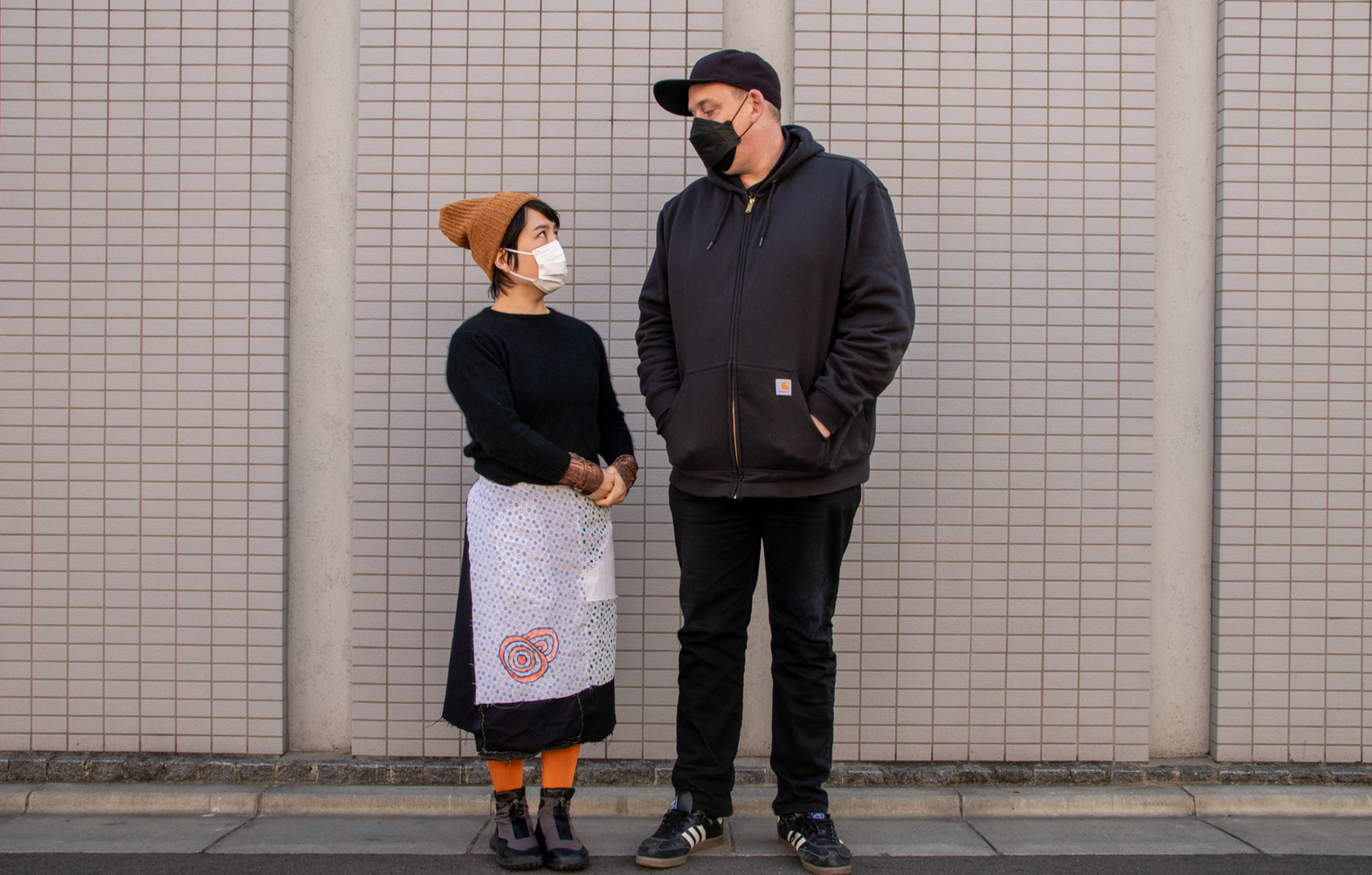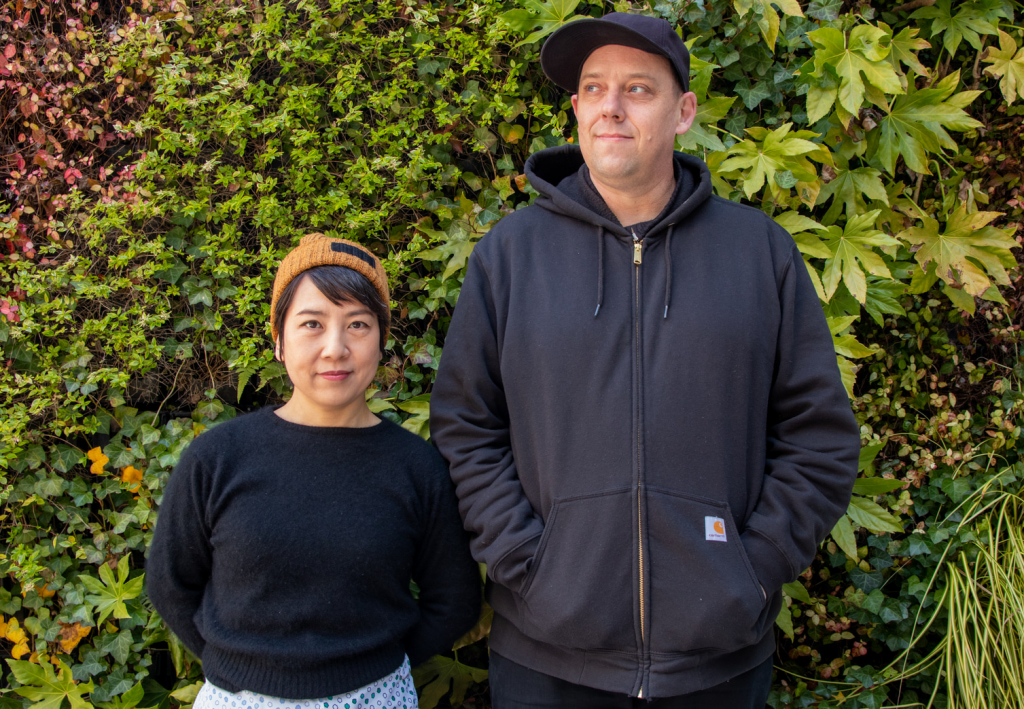Ian Lynam and Yuki Kameguchi are a cross-disciplinary design duo who seamlessly weave their wide-ranging artistic passions as both coworkers and life partners. Lynam, a New York native, is a graphic designer, writer and educator with over two decades of experience. Kameguchi, born in Fukuoka, is a visual artist and designer with a love of contemporary fashion and antique kimono.
Together, they run the multidisciplinary design studio Ian Lynam Design, specializing in brand strategy, typography and content curation. Both have worked on projects that include a responsive website and travel guide for the Japanese National Tourism Organization and the interior design for both Google and YouTube’s Tokyo offices. Lynam also teaches classes in graphic design and motion graphics as well as graphic design history at Temple University Japan Campus. It was at one of his classes that I first met them both.
In 2021, the couple decided to jump into a new project that would allow them to further indulge and share their love for design and fashion. They called it Sailosaibin. It’s an intimate and weird retail store, located in Shibuya’s Sasazuka district.
There, you can find all sorts of things for sale, from bright colored and edgy zori shoes to pins and badges decorated with dark-humor jokes. There are also vintage design books and handmade flamboyant jewelry. Like a tiny circus, there’s always something to look at. But better than that, you can find a generous, humorous and down-to-earth couple with a contagious passion for what they do.

Inside Sailosaibin, the couple’s recently-opened retail store located in Shibuya’s Sasazuka district.
Crossing Paths In Tokyo
Lynam came to Japan for the first time in 1998 as a member of the noise band Jalopaz. As part of the performance, he would wear a polar bear suit and attack the audience. The designer made a few more trips here and then decided to settle in Tokyo in 2005.
“I kept coming back to visit because I found the visual culture fascinating,” he says. “Living in Tokyo has made me very, very conscious of every single move I make aesthetically because everything is so different from America.”
He also applies the same principle to his classes and publications on Japanese graphic design. Lynam is currently finishing what he hopes will be a landmark textbook on Japanese graphic design history. It has taken him almost a decade to write. Language barriers and the small number of foreign language resources have prevented people outside of Japan from obtaining a deep understanding of the nation’s rich graphic design production. He hopes this book will change that.

This obi is one of the top pieces in Kameguchi’s collection
Kameguchi moved from Fukuoka to Tokyo a few decades ago. She worked for a number of years at Lunco, an antique kimono shop in Mejiro, due to her interest in fashion and Japanese traditional clothing. While handling a wide variety of rare vintage kimono, Kameguchi came across pre-World War II Art Deco designs, which she became obsessed with.
She is currently running Sailosaibin. As well as some of the aforementioned items, they also stock a mint green raincoat-like jacket with two huge clear zippered pockets on the front and a bigger one on the back — like a backpack and jacket-in-one.
When I asked Kameguchi about it, she answered: “We sell things we like, not stuff that might sell easily.”
Kameguchi is also the co-designer of a line of zori, or kimono sandals, called Ouzuri. Her interest in vintage kimono channels into her designs.
“I’m largely guided by my intuition and my emotions. Form and color are super-important to me. It’s like wine — when someone says something is really ‘easy to drink,’ I want to go in a different direction,” she says.

Partners in and out of their jobs
When Harry Met Sally
If you ask any two lovebirds how they first met, most would easily — and quite happily — be able to tell you their first encounter. But for Lynam and Kameguchi, it remains a mystery to this day.
“In all honesty, we don’t remember,” Kameguchi tells me with a smile. They suspect it was likely at a party at the home of the founding editor of PingMag, Japan’s first design blog. “We’d heard of each other for a long time before we actually met. And then we became friends. And then more than that.”
Their mutual love for design and for each other may be their key to finding a balanced work dynamic as a couple who are both business partners and coworkers. As with any relationship, it’s not always sunshine and rainbows. They admit that difficult days can be challenging.
“We’re both pretty stubborn in our own ways and when stubbornness or a lack of ability to communicate properly comes up, that’s when problems start. The problems are always surmountable — we were friends before things got romantic and there’s a lot of mutual respect and an honest affinity between us,” says Lynam.

At Sailosaibin the couple indulge in their passions — fashion for Kameguchi and books for Lynam
The couple knows Tokyo’s streets by heart and have seen many changes down the years. Design trends have come and gone and come back again. More than that, the fast development and increased access to technology have changed the way the design industry operates.
“I think we’re at a very interesting moment in history. Design software is more accessible than ever and more folks are designing things. Because everyone’s using the same tools, there is a general sameness to contemporary aesthetics”, Lynam comments.
But when it comes to Japan, the graphic designer reassures me that historical styles from previous eras will remain important to the country’s cultural landscape.
“We’ll see that again and again because Japanese culture is so nostalgic for big swaths of the past,” he says.
The couple’s work was recently featured in the 324-page book Corinthians Press 002: Zombie Somnambulance. Co-edited and designed by Lynam, the Japanese-English publication features the work of 12 contemporary artists, designers and photographers from Japan, Korea and the US. It’s a small but fascinating look into the design world on a global scale.
As Lynam concludes: “People tend to think that art innovates and design catches up to art, but that’s not the case anymore.”

One of the accessory displays at Sailosaibin, showcasing their handmade jewelry collections.
The Design Scene Today
During our chat, Lynam and Kameguchi shared a few off-the-beaten-path locations owned by people whom they know personally where you can witness firsthand what designers are up to.
Print Gallery Tokyo in Funamachi, Shinjuku. As the name suggests, the gallery exhibits printed works, including posters, books and letterpress printed matter by international designers and typographers.
Studio 35 Minutes is a former photo-developing shop turned gallery space with an attached bar in Araiyakushi, Nakano. The gallery holds photography-oriented exhibitions from budding local photographers to world-renowned names.
Ginza Graphic Gallery and Creation G8 Gallery each hold regular exhibitions and lectures on design and advertising works by creators from Japan and abroad. According to the couple, they are “two of the best design-oriented galleries in the world.”









